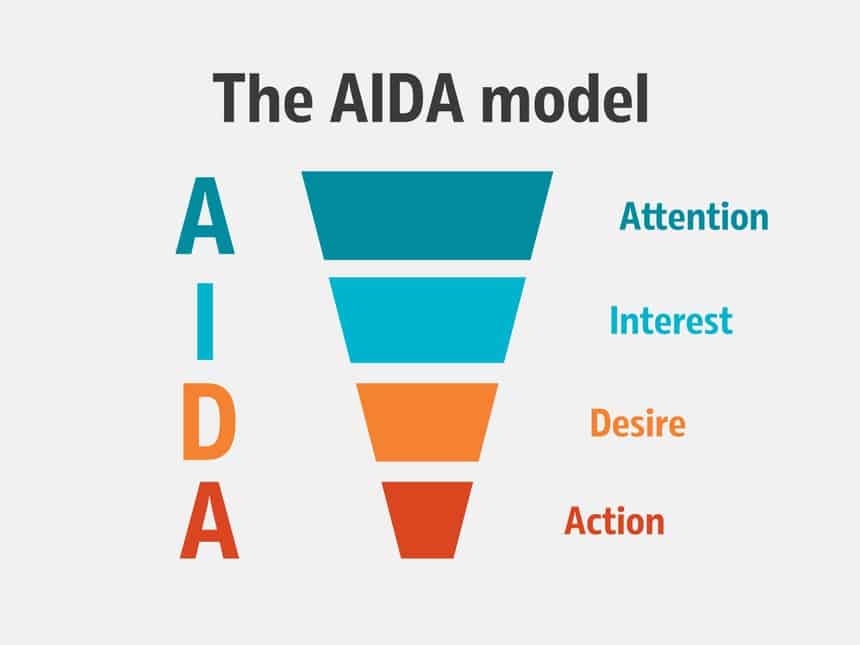The AIDA (Attention > Interest > Desire > Action) is the most popular hierarchy of effects model used in marketing and advertising.
What AIDA stands for
AIDA is the achronim of Attention, Interest, Desire and Action, the four steps sequence in a customer’s decision process. This hierarchy of effects model is very popular among advertising agencies because it suits best their role in the marketing process.
Here is the marketing model step by step, with examples of how each can be achieved via advertising, sales promotion or shopper marketing:
- A – Capture customer’s Attention (can be achieved via catchy intro of an ad)
- I – Generate Interest in the brand (e.g. a highly appealing video)
- D – Stimulate Desire to learn more about the brand (innovative features)
- A – Make the customer to Action (e.g. a price promo)
Advantages of choosing AIDA in your presentations
AIDA is very easy to understand and to implement in Creative Briefs, as it is linear and with clear goals for each of the four steps.
At the same time, the AIDA marketing model is a funnel, being highly compatible with eCommerce funnels, so despite the fact that it is 100 years old (!), this type of hierarchy of effects is still valid today.

Who invented the AIDA model?
Apparently, its inventor is a vintage sales and marketing specialist called Elmo Lewis, who said in 1910 a public talk in Rochester, USA: “ All advertising must attract attention, maintain interest, arouse desire, get action.“.
If you like this hierarchy of effects model and want to read more about Elmo Lewis, you can do it on his Wikipedia profile.
What are the limitations of AIDA?
First of all AIDA model does not cover the post-purchase experience of a customer, which we know is critical for loyalty-based marketing models and eCRM / CRM automation activities (Customer Relationship Management).
Secondly, the model is way too simple for some categories of services, in which the customer’s decision process is not linear (e.g. real estate, insurance, automotive). However, it works great for FMCG and impulse-buying categories of products and services.
Sources:

